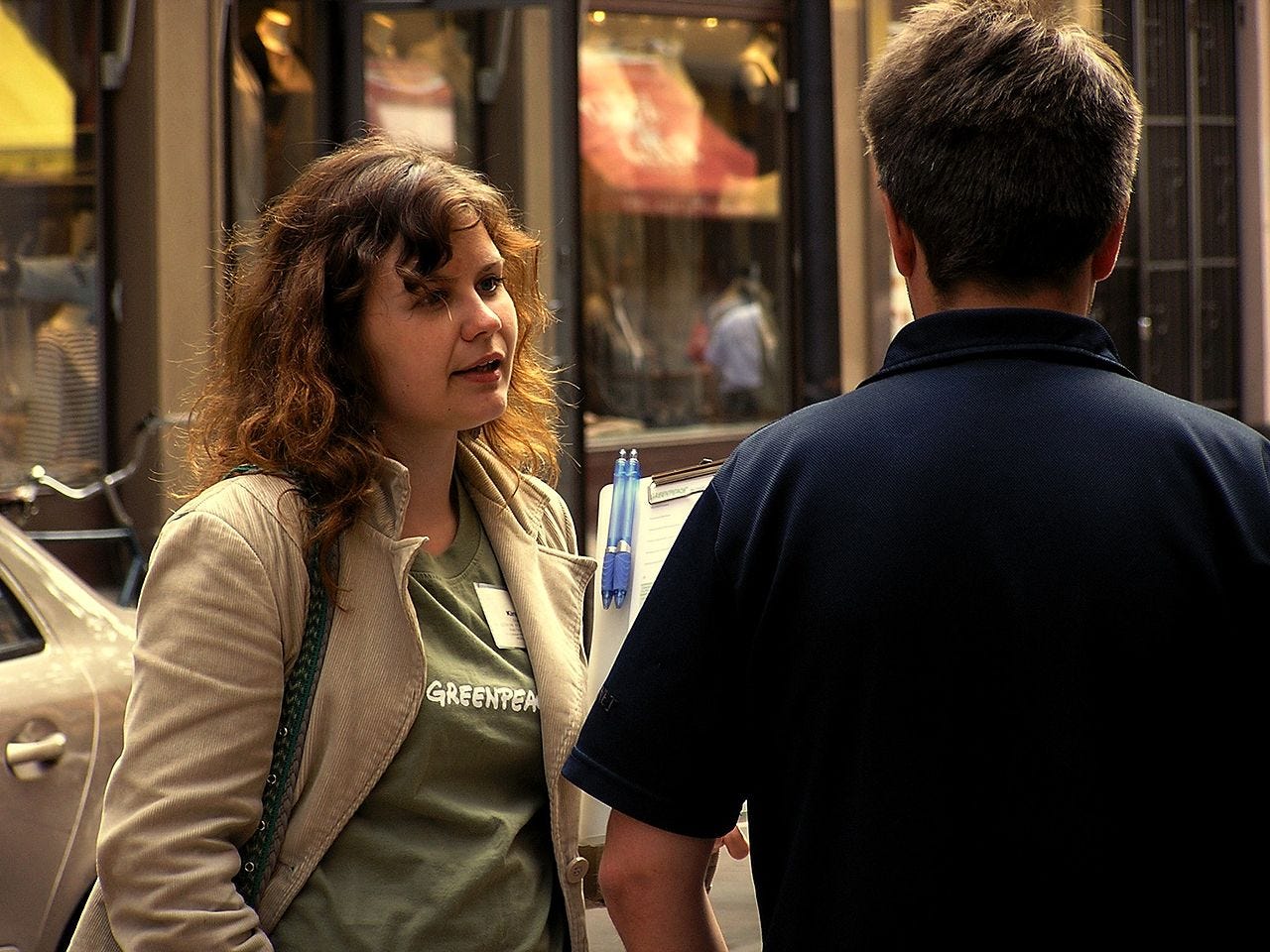What I Spend in a Month: Streaming vs. Charity
Generosity #3
I was out running errands one weekend shortly after moving to Seattle, when a guy in a blue vest with a clipboard stopped me to compliment my shoes. I began chatting with him because I’m a person who was raised to have MANNERS.
Quickly the conversation pivoted to the charity he was representing. He was pushing me to sign up for a monthly recurring donation. I politely declined, explaining that I was a broke college student.
“Come on, it’s $5 a month!” He badgered me. “You probably spend more on coffee every week!”
(I did not.)
My small-town upbringing had not prepared me for the level of brusqueness I’d need to disengage from this charity pusher. Sadly, getting bullied by clipboard-wielding strangers is not a rare occurrence for me. Perhaps they can sense my ambivalence? Yes, I do care about *insert cause here*! Maybe I could spare another $5, $10, or $15 a month to help *worthy campaign*?
But while I still think we should never resist a generous impulse, I do wonder at the hodgepodge of charitable giving I’ve been doing—was there a better, more effective way to give?
The podcast, Hi-Phi Nation, tackled this question. They interviewed different philosophers to get their takes on effective giving. Here are my key takeaways from this conversation:
it’s good to care about the efficacy of our giving. We don’t want to donate to charities that waste money on a ton of overhead, for example.
Effective Altruists posit that we should be “indifferent” towards giving locally vs. internationally. They say we should put our money towards interventions that save the most lives per dollar, i.e. mosquito bed nets
Whereas Mutual Aid-ers say that only caring about lives-per-dollar leads to a “flattening of values” while Mutual Aid is about “connection and care.”
I can see both sides. I do think it makes sense to give locally, where we can see for ourselves whether our giving is having its desired effect. Bad data is just one of the criticisms surrounding Effective Altruism. (Don’t get me started on the shrimp controversy.)
With this discussion fresh in my mind, I sat down with my husband and fired up the YNAB app so we could see how much we were actually spending and where.
I was afraid to look at our streaming totals, TBH. We currently pay for: Amazon Prime, Spotify, Hulu, Disney+, AppleTV, Netflix, Peacock, HBO, NYT games, and Microsoft Game Pass. (I’d forgotten about half of these!) Our streaming total is $102/month.
On top of that, we pay for several Substacks, digital versions of New York Magazine, The New Yorker, The Atlantic, and the print version of The Seattle Times. That adds up to another $94.90/month. (Though the numbers are a little squirrelly as some of the Substacks are yearly subscriptions rather than monthly.)
By contrast, we have monthly donations set up with our church, Give Direct, World Vision, International Rescue Committee, Amnesty International, for a total of $1200/month. This meets our goal of donating roughly 10% of our income.
Honestly, I’d expected our spending to look worse—that’s a long list of streamers! But we do have some weird discounts and illegally share a few services with friends, which helps keep that number down.
Still, there’s room for improvement. We want to cancel a few streaming services (Netflix and Amazon are the most expensive) and have our kids pay for their own game passes.
As far as charity spending, we decided we want to do half local and half international causes, and to consolidate our spending. (That $15/month to Amnesty? Clipboard pressure, baby!) There’s another local charity we’d like to support, Low Income Housing Institute, so we’re going to cancel a few of those smaller monthly donations and eliminate the double payments we’re making to Give Direct—somehow we’re both donating separately to them? (This is the kind of stuff you only find out by auditing your spending.)
We also want to reserve some charity spending for incidental donations to various community needs and fundraisers.
Doing this kind of budgetary spring cleaning can feel very ominous, but I do think that the first step towards being mindful with our money is tracking our spending. Does our spending align with our priorities? If not, what steps can we take to bring it into alignment?
I also find tithing to be a deeply spiritual practice. Donating 10% of our income reminds me that this money is not ours alone—we have benefitted from the community and so it’s right to give money back to it. And I know that I speak from a very privileged position, but I do think that even if 10% is out of reach for some, everyone benefits from giving whatever they can.
But not to clipboard people. Avoid them at all costs.
Random Fact:
apparently these clipboard guys are sometimes referred to as “chuggers” (charity + muggers)
Related Posts:



First of all, I love YNAB. 😍
We used to give 100% of our charity/tithe budget to the church, but about 10 years ago we diversified to support multiple organizations, including our church.
We also keep a portion of this money in a “bucket” for non-charitable community giving such as GoFundMe campaigns or helping a friend fix a car or buying groceries for a neighbor—basically situations where there is need but not a tax deduction. This is a practice I picked up after attending a workshop on equitable giving practices.
Chuggers! Delightful! Giving money away is a great joy…except to the chuggers.